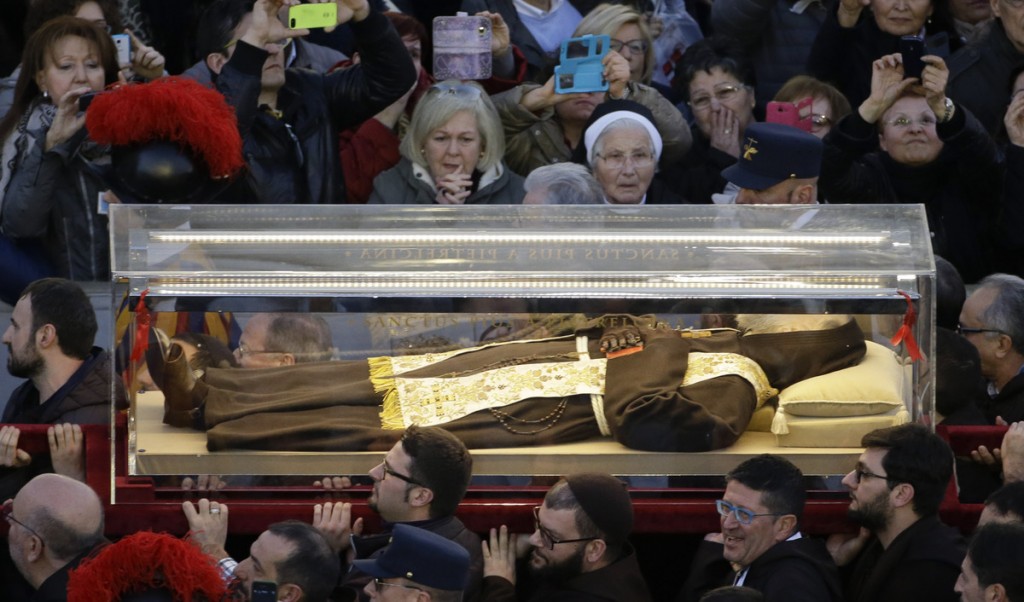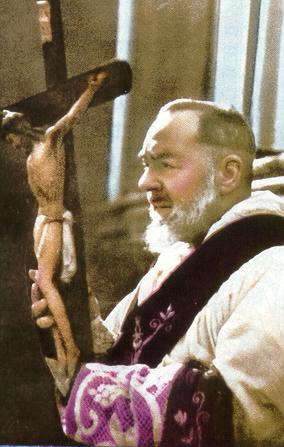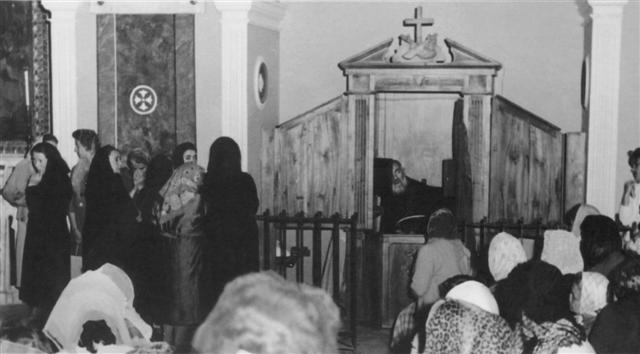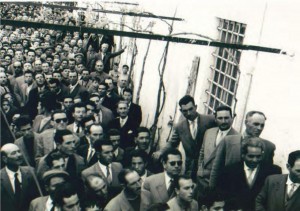“Be imitators of me, as I am of Christ. I commend you because you remember me in everything and maintain the traditions even as I have delivered them to you“ [1 Cor. 11:1–2, NRSV].
Padre Pio is Italy’s most popular saint, a miracle worker who is said to have interceded on behalf of thousands. He has a global following since his death in 1968.
In 2008, his body was exhumed and put on display in San Giovanni Rotondo in Puglia, the southern Italian town where he lived most of his life. Puglia became a pilgrimage site for millions during his long life. His remains were fitted with a silicone replica of the friar’s bearded face, which looks quite life-like.
Pope Francis, known for his admiration for Padre Pio, wanted the veneration of the saint’s remains to be a signature moment in the Jubilee Year of Mercy, with its emphasis on the forgiveness of sins. This was highly publicised in February when the bodies of Padre Pio and a fellow Caouchin Padre Leopoldo were driven across Italy, and then paraded through the streets of Rome in glass coffins for viewing and a Mass in St. Peter’s Basilica. Tens of thousands followed along. For them, it was not just an event. It had a religious meaning, with a highly historical and symbolic value. After rolling out the bodies of the two Padres, Pope Francis began to dispatch a group of priests around the world — so-called Missionaries of Mercy — to absolve sins, and Padre Pio and Padre Leopoldo are being offered up as good examples.
This parading of the saint’s body along the streets and its installation at the basilica remind us that venerating saints or praying at the tombs of martyrs is a time-honored Catholic practice. Churches were built over the dead. Catholicism, we are reminded, is a religion that understands the course of history has been irrevocably altered because of the death of one man. Death and resurrection are at the very core of what we profess. The cult of the saints was a fundamental and defining belief for early Christians. Whereas in the ancient Roman world, their dead were kept outside the city, Christians would bring the bodies of the saints into their churches, touching and kissing the containers of their very bones. A close relationship was forged; communion with the saints was palpable, even tactile.
Furthermore, Pope Francis has always appreciated the fact that Catholics, including large numbers of poor people, commonly express their Catholic faith through “popular devotions.” And venerating relics — objects or even bone fragments believed to come from saints — is deeply ingrained in Catholic tradition.
A Capuchin friar and famous for bearing the stigmata, Padre Pio was renown for his patience in hearing confessions, which he did for hours on end, day after day, year after year. Evidently, he had an uncanny insight into the sins that were burdening a penitent’s soul, which doubtless made him the most beloved confessor in history. Anyone who had the sure purpose of amendment found him the best help. Lore has it that Padre Pio heard two million confessions.
“Prayer,” the saint said, “is the best weapon we have, it is the key to God’s heart.” A prayer ascribed to the saint which is our all-time favourite reads: “Stay with us, Lord, for you are our light, and without you, we are in darkness.” Saint Pio leads us right back to the Light of the World, to the Lumen Gentium, the merciful face of God, all the time.
Copyright © Dr. Jeffrey & Angie Goh, October 2016. All rights reserved.
You are most welcome to respond to this post. Email your comments to jeffangiegoh@gmail.com. You can also be dialogue partners in this Ephphatha Coffee-Corner Ministry by sending us questions for discussion.




